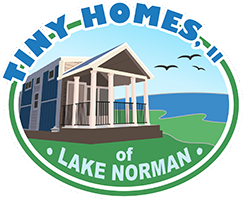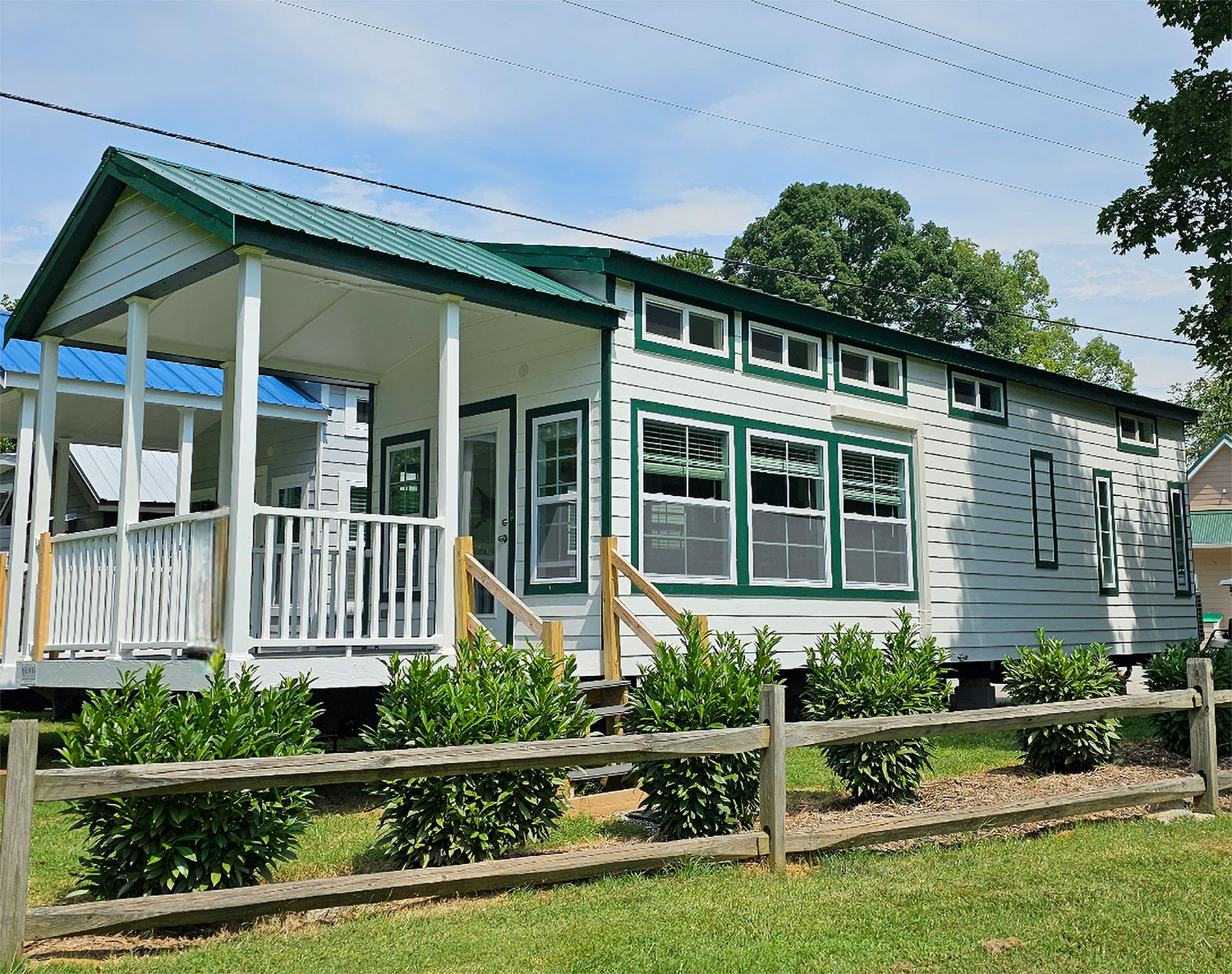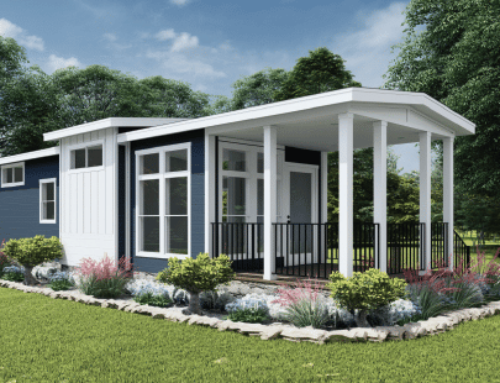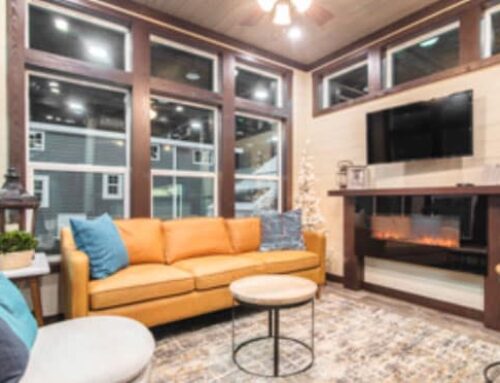The Rise of Tiny Homes for Eco-Friendly Living
In recent years, the tiny home movement has gained significant momentum as a symbol of sustainable living. These compact dwellings, typically 100 to 400 square feet, are not just a housing trend but a lifestyle shift toward minimalism and environmental responsibility. People are increasingly drawn to eco-friendly tiny homes to reduce their ecological footprint, simplify their lives, and prioritize experiences over possessions. This movement is not just about living in a smaller space; it’s about embracing a philosophy that values sustainability, creativity, and freedom from the burdens of excessive materialism.
Why Tiny Homes are More Sustainable
Tiny homes are inherently more sustainable than traditional housing due to their reduced size. This smaller scale translates to a significant decrease in the materials required for construction, thus lowering the environmental impact of the building process. Furthermore, tiny homes are often designed with energy efficiency in mind, utilizing advancements in insulation, solar energy, and eco-friendly building materials. The result is a dramatically reduced energy consumption for heating, cooling, and daily living. Additionally, the smaller size of these homes naturally leads to a smaller carbon footprint, as less space means less energy and resources are needed for maintenance and living.
Behavioral Changes in Tiny Home Living
Adopting a tiny home lifestyle often leads to profound behavioral changes. The limited space encourages residents to embrace minimalism, carefully considering the necessity and value of each item they own. This mindset extends beyond mere space-saving; it fosters a more conscious approach to consumption, reducing waste and promoting sustainability. Tiny home dwellers typically make more environmentally friendly choices, such as buying less, choosing quality over quantity, and being more resourceful. This shift toward a more intentional lifestyle benefits the environment and enhances personal well-being and satisfaction.
Designing an Eco-Friendly Tiny Home
In the realm of sustainable living, designing an eco-friendly tiny home is a testament to innovation and environmental stewardship. The core principles of sustainable design and construction are at the forefront, emphasizing not just the efficiency of space but also the ecological footprint of the building process. Key to this approach is the use of recycled and repurposed materials, which significantly reduce waste and conserve natural resources. These homes become exemplars of green living by incorporating items like reclaimed wood, recycled metal, and sustainable insulation materials. This design philosophy extends beyond mere material selection; it encompasses the entire lifecycle of the home, from planning and construction to long-term maintenance. The goal is to create a living space that is efficient, functional, and harmonious with the environment, demonstrating that small-scale living can have a profoundly positive impact on our planet.
Energy Efficiency in Tiny Homes
Energy efficiency is a critical component in the design and functionality of tiny homes, playing a pivotal role in their appeal as sustainable living spaces. A key feature in achieving this efficiency is integrating solar energy solutions. Solar panels on tiny homes capture renewable energy, significantly reducing reliance on traditional power sources and lowering utility costs. This sustainable energy solution is often complemented by the use of energy-efficient appliances specifically chosen for their low power consumption, further enhancing the home’s overall energy efficiency.
Another vital aspect of energy efficiency in tiny homes is insulation. Adequate insulation is essential for maintaining comfortable indoor temperatures and reducing the need for extensive heating and cooling, which are major energy consumers. Options like spray foam, rigid insulation, or eco-friendly choices like sheep’s wool or recycled denim provide excellent thermal performance. These insulation materials conserve energy and contribute to a comfortable and sustainable living environment, making tiny homes a beacon of energy efficiency and eco-conscious living.
Maximizing Natural Resources in Tiny Homes
In the pursuit of sustainability, tiny homes are at the forefront of maximizing natural resources, ingeniously using every element to enhance eco-friendliness and efficiency. A vital aspect of this is the strategic utilization of natural lighting and the selection of renewable flooring materials, coupled with eco-friendly heating and cooling options.
Embracing Natural Light
Natural lighting plays a pivotal role in tiny home design. Large windows, skylights, and strategically placed mirrors are commonly used to amplify daylight, illuminating the interior spaces without the need for artificial lighting during the day. This reduces energy consumption and creates a warm, inviting atmosphere within the home. The psychological benefits of natural light, such as improved mood and increased productivity, are a bonus, making the space more livable and enjoyable.
Renewable Flooring Materials
Flooring in tiny homes is another area where sustainability is emphasized. Materials like bamboo, cork, and reclaimed wood are popular choices. Bamboo, a fast-growing grass, offers durability and a unique aesthetic, while cork provides a soft, comfortable surface with excellent insulation properties. Reclaimed wood, sourced from old buildings or furniture, adds character and history to the home, all while repurposing materials that would otherwise be discarded. These renewable resources are not only environmentally friendly but also add an element of natural beauty to the tiny home.
Eco-Friendly Heating and Cooling
Heating and cooling in tiny homes require innovative approaches to maintain efficiency. Passive solar design is a common strategy, where the home is positioned to maximize sun exposure in the winter and minimize it in the summer. Thermal mass materials like stone or concrete absorb heat during the day and release it at night, regulating the indoor temperature. For active heating and cooling, mini-split systems and solar-powered air conditioners are efficient choices, offering climate control without excessive energy use. Proper insulation is also crucial in maintaining temperature stability, reducing the need for artificial heating and cooling.
In conclusion, maximizing natural resources in tiny homes is not just about reducing environmental impact; it’s about creating a harmonious, sustainable living space that is both efficient and aesthetically pleasing. Through thoughtful design and the use of eco-friendly materials and technologies, tiny homes can offer a comfortable, sustainable way of living that aligns with the principles of environmental stewardship and resource conservation.
Sustainable Living Practices in Tiny Homes
Tiny homes inherently encourage a more sustainable lifestyle, with their design and limited space prompting residents to adopt practices that reduce waste and promote recycling. This shift toward sustainable living is not just a matter of space efficiency; it’s a conscious choice to minimize one’s environmental impact.
One of the most significant aspects of sustainable living in a tiny home is reducing waste. The limited space compels residents to carefully consider each purchase, leading to less consumption and, consequently, less waste. This mindful approach to consumption means buying fewer but higher quality items that last longer and avoiding single-use products. It’s about making choices that are not only good for the individual but also beneficial for the environment.
Recycling and composting have become integral parts of daily life in a tiny home. Many tiny homeowners set up efficient recycling systems and composting solutions, even in limited spaces. Composting organic waste reduces the amount of garbage sent to landfills and provides nutrient-rich soil for gardening, another popular activity among tiny home dwellers.
Moreover, living in a tiny home often inspires a deeper connection with the environment. Residents tend to be more aware of their resource consumption, leading to more sustainable choices like using renewable energy sources, conserving water, and engaging in community-based environmental initiatives.
Sustainable living in tiny homes goes beyond just reducing and recycling waste. It’s about embracing a lifestyle that respects and conserves natural resources, promoting a healthier planet and a more mindful way of living.
Challenges and Solutions in Eco-Friendly Tiny Home Living
While rewarding, living in an eco-friendly tiny home comes with its own challenges. However, innovative solutions and technologies are continually emerging to address these obstacles, making tiny living more accessible and sustainable.
Zoning and Legal Challenges
One of the primary hurdles for tiny home enthusiasts is navigating zoning laws and building codes, which often aren’t designed with tiny homes in mind. Many areas lack clear regulations for these unique dwellings, leading to legal grey areas. The solution lies in advocacy and community engagement. Tiny home advocates are working with local governments to update and adapt zoning laws, making them more inclusive of tiny homes. Additionally, building tiny houses on wheels or considering them as accessory dwelling units (ADUs) can sometimes provide a legal workaround.
Space Limitations
The limited space in tiny homes can be challenging, especially for first-time dwellers. To combat this, innovative space-saving solutions like multi-functional furniture, vertical storage, and convertible spaces are key. Modern design techniques maximize usability without clutter, incorporating elements like fold-down desks, lofted beds, and built-in storage.
Environmental Technology Integration
Integrating eco-friendly technologies into a small space can also be challenging. Advances in compact and efficient technologies, such as all-in-one washer-dryer units, miniaturized renewable energy systems, and smart home devices, are making living sustainably in a tiny home easier. These technologies are designed to optimize space and energy use, aligning with the eco-friendly ethos of tiny living.
Community and Social Acceptance
Finally, the social aspect of living in a tiny home can be challenging. Building a supportive community is vital. Online forums, local meetups, and tiny house events provide platforms for tiny home dwellers to connect, share experiences, and offer support.
In conclusion, while there are challenges in eco-friendly tiny home living, the growing number of innovative solutions and technologies, along with a supportive community, are making it increasingly feasible and enjoyable. These advancements not only address practical concerns but also help in promoting a sustainable and minimalist lifestyle.




